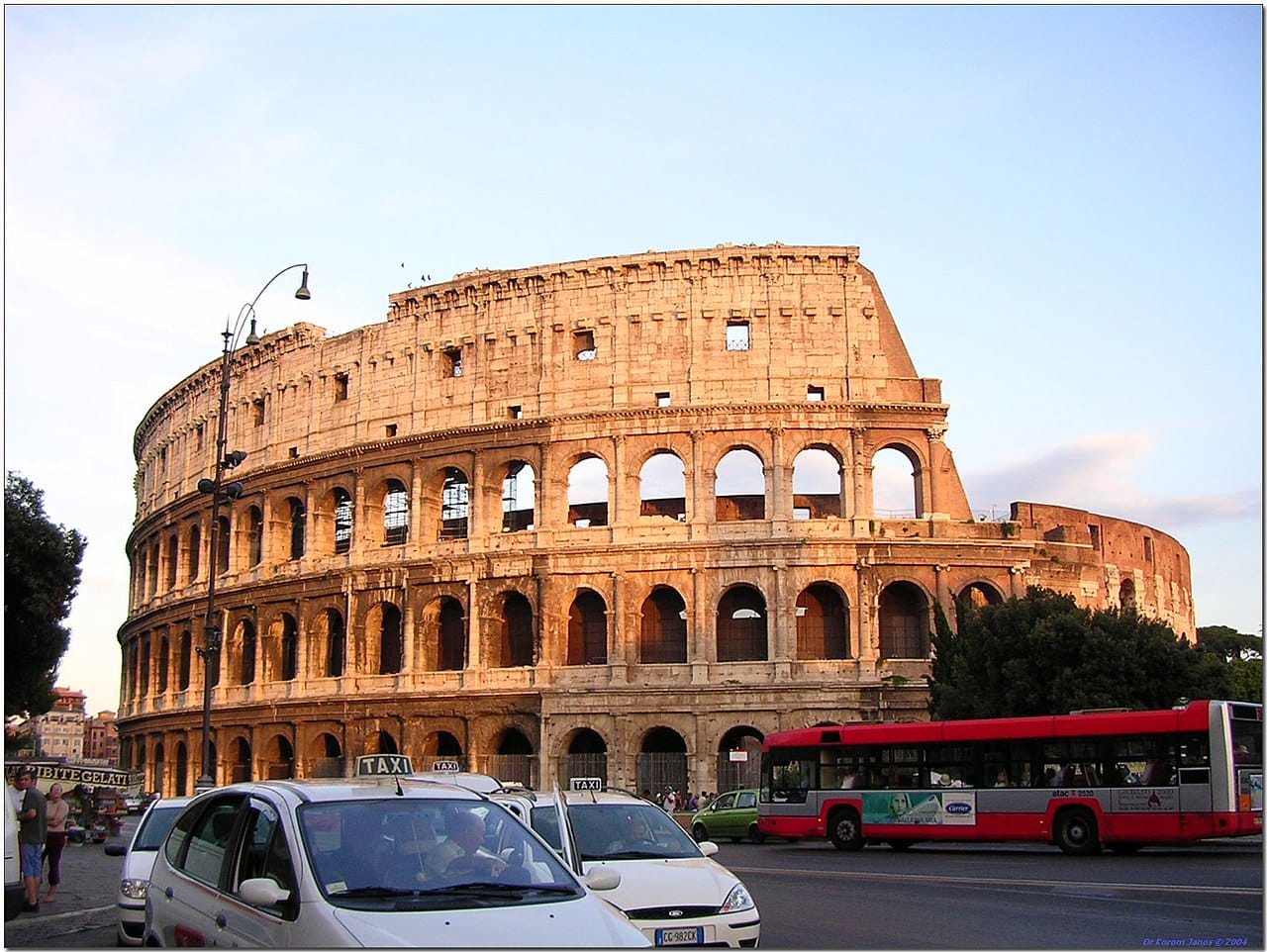
The most important monuments of Rome are inscribed throughout the long history of the Italian city. Not for nothing is it called "the Eternal City". Since its legendary founding by Romulus and Remus, has been the capital of the most powerful empire of Antiquity, one of the places where the wonderful Renacimiento and, already in our days, nerve center of Italy.
Fruit of so many centuries of history are its spectacular monuments. You can find them built in the Latin era, precisely Renaissance or Baroque and also contemporary. But they all have the common denominators of its splendor and beauty. On the other hand, it is always subjective to talk about the most outstanding. Because each visitor will have the favorites of him. However, we are going to show you what, in our opinion, are the most important monuments in Rome.
The Colosseum and the Forum
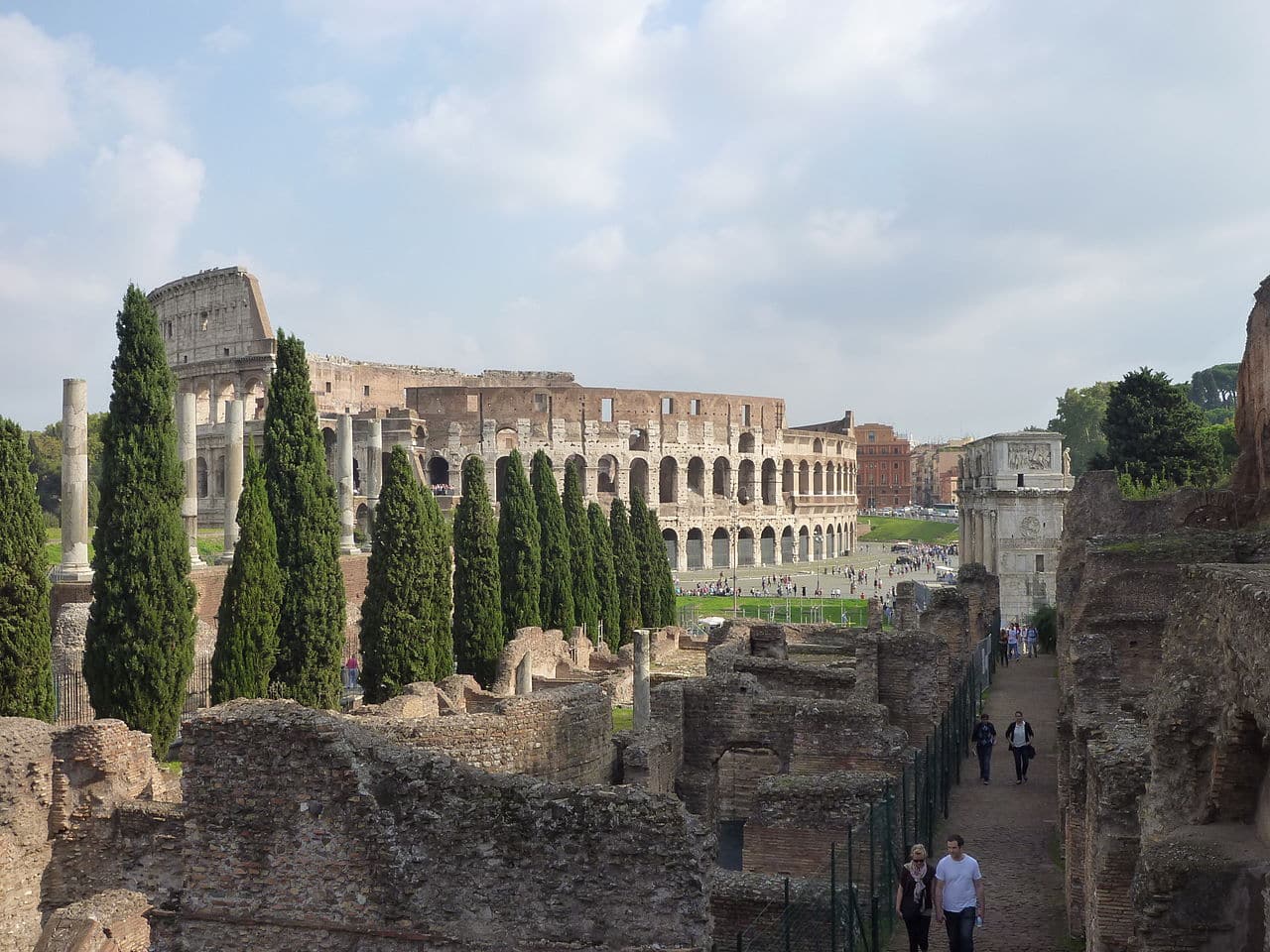
Colosseum and Forum, two of the most important monuments in Rome
We begin our tour of the Coliseum, one of the great symbols of the city, which is located in the eastern part of the Roman Forum. Built in the first century after Christ. It is a huge amphitheater (in fact, it is also known as Flavian Amphitheatre) that had capacity for more than sixty thousand people spread over eighty rows of stands.
To give you an idea of its greatness, the events of its inauguration lasted a hundred days and it was active for five centuries. was the emperor Domitian who ordered to build it to be the most colossal in the entire Empire. It hosted many gladiatorial combats, but also other shows such as animal hunts or theater performances.
But perhaps the most impressive events were the naval battle re-enactments. For these, the sand was turned into a large artificial pool. This was oval in shape and had several water filling and subsequent drainage systems. As a consequence, life-size vessels participated in these battles.
Moreover, the Roman Forum is the set of remains preserved from the center of the latin rome. She crosses it VSacred Way, which, precisely, communicated this area with the Colosseum. But the most interesting thing you can see in the Forum is the set of buildings from that time that it shows. It would be impossible to tell you about all of them here. But we will mention you as a sample the temples of Romulus, Saturn or Vesta, basilicas Emilia and Julia, Arches of Titus and Septimius Severus or the Julia Curia, which was the seat of the senate.
There are other forums in the city. We must also mention you among them the Imperials, which are Caesar's, Augustus's, Nerva's and Trajan's. They formed a complex next to the previous one.
Basilica of Santa Maria la Mayor
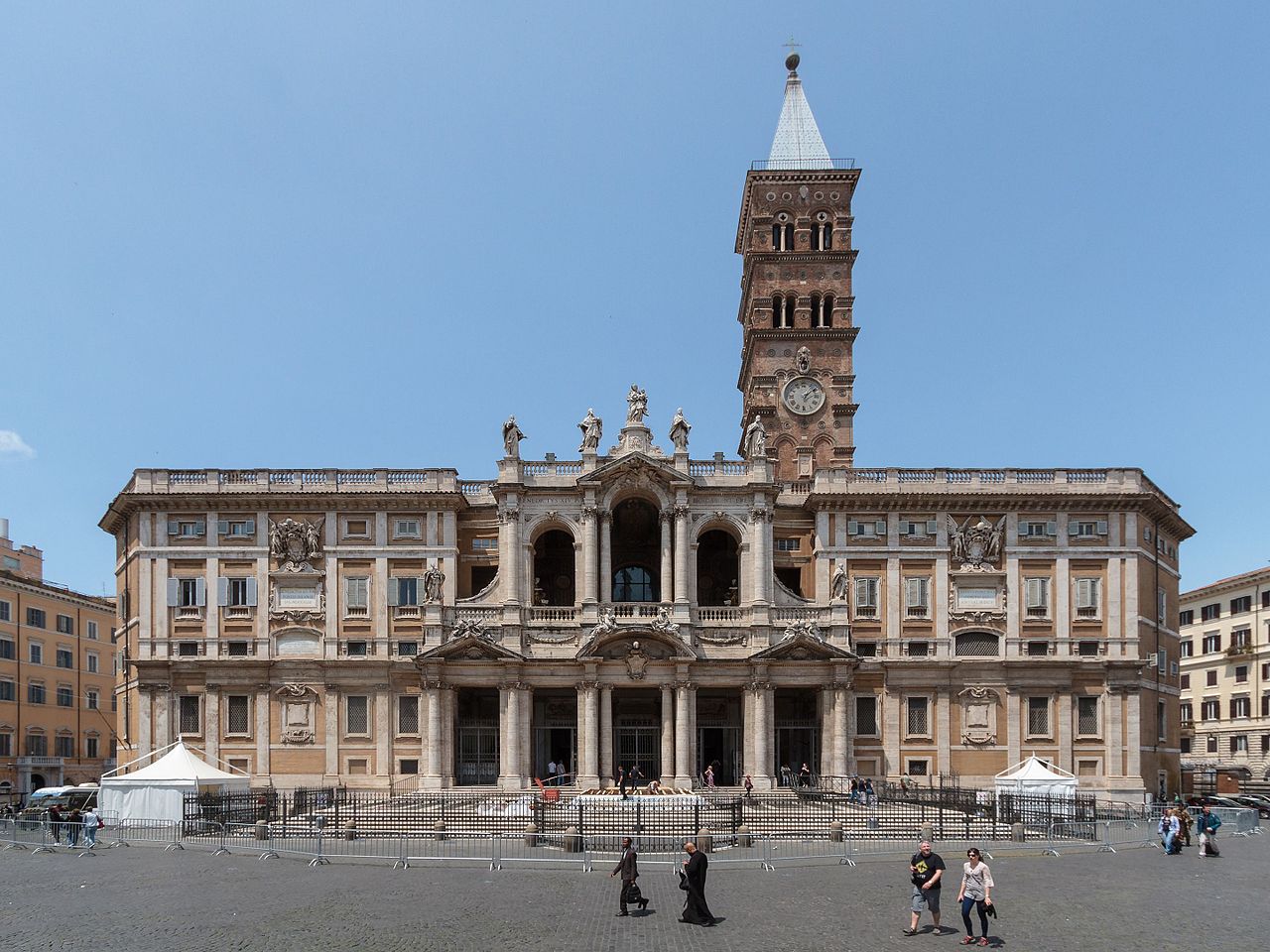
Basilica of Santa Maria Maggiore, one of those that make up the Pentarchy of Rome
Declared Heritage, is an impressive temple that combines elements from the Early Christian period with other Romanesque, Gothic, Renaissance and Baroque ones. Because its primitive construction dates back to the XNUMXth century of our era and, later, extensions and reforms were made.
But, if its exterior is spectacular, you will be even more surprised by everything that its interior offers you. One of its greatest attractions is the set of mosaics on the life of the Virgin Mary that date from the early times of the church, that is, from the XNUMXth century. From the same period is the Grotto of the Nativity o Crypt of Bethlehem, which is under the temple and which houses the remains of important figures in ecclesiastical history.
They are also spectacular Sistine Chapel (not to be confused with Michelangelo's) and the Pauline. The first is the work of Domenico Fontana and is covered in marble. As for the second, the work of Flaminio Ponzi, is baroque and includes the tombs of the popes Clement VIII y Paul V. Likewise, other jewels that you can see in Santa María la Mayor are the sculptures Saint Cajetan holding the Child, Bernini, and those of the altar, of Pietro Bracci; The funerary monuments of the popes Clement IX y Nicholas IV, due, respectively, to carlo rainaldi, Domenico Guidi and the already mentioned Domenico Fontana and the frescoes in the sacristy, the work of Passignano y Giuseppe Apulia.
But Santa María la Mayor is not the only basilica you should visit in the Eternal City. Also part of the most important monuments in Rome are those that make up the Pentarchy next to her. We talk about the spectacular Basilica of Saint John Lateran, considered the cathedral and also a World Heritage Site; that of Saint Lawrence Outside the Walls, whose construction began in the V century; the colossal of Saint Peter of the Vatican and Basilica of Saint Paul Outside the Walls, which also belongs to the Papacy.
The Trevi Fountain, perhaps the most popular among the most important monuments in Rome
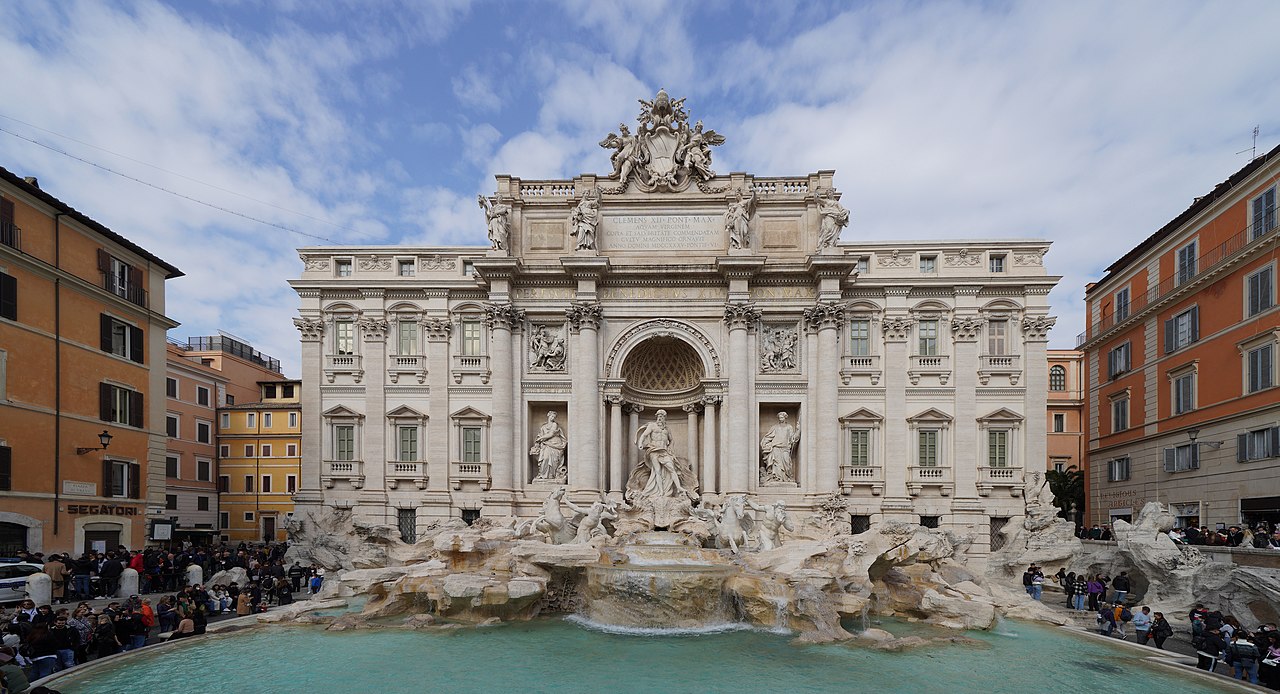
The spectacular Trevi Fountain
We are going to talk to you now about the famous Trevi Fountain both because it is one of the most important monuments in Rome and because it is one of the most popular. Practically all the tourists who pass through the Italian city come to visit it flip a coin into the water to make a wish.
It is a beautiful baroque construction from the XNUMXth century due to the architect Nicola Salvi, who took thirty years to finish it. Take as a backdrop the Poly Palace, to which it provides a new facade. answer the call giant order, architectural style characterized by its colossal dimensions (for example, the columns of the fountain have two floors). In the center, it presents a triumphal arch that opens into a niche with columns. Allegorical figures such as Abundance or Health and a chariot guided by tritons taming seahorses complete the iconography.
On the other hand, as you know, the Trevi is not the only important fountain in Rome. We also advise you to see the the barge, work of Bernini, in the Plaza de España; the of Moses, in the Plaza de San Bernardo; that of the four rivers, which is also due to Bernini and is in Piazza Navona, or the two of Farnese square, whose pools come from the Termas de Caracalla.
Castel Sant'Angelo
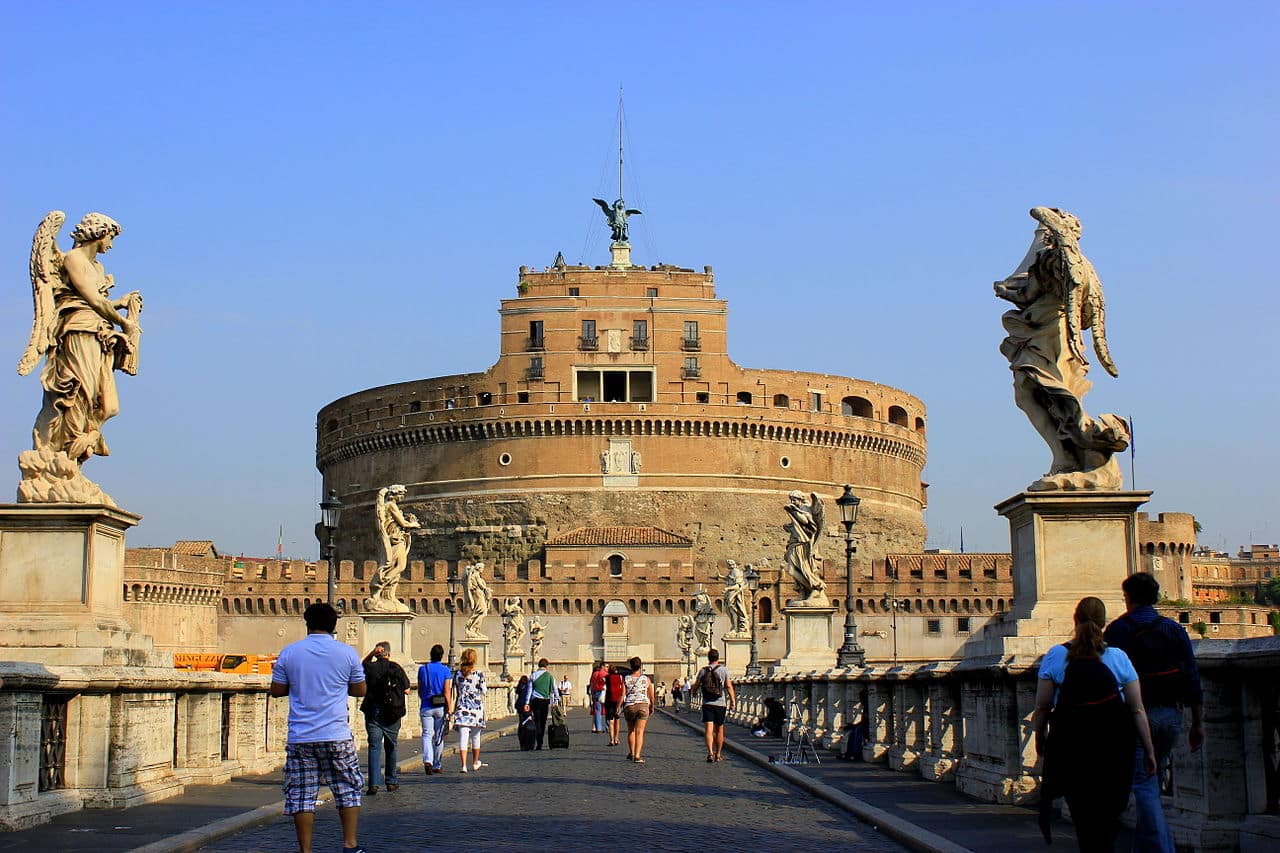
Bridge and Castel Sant'Angelo
Located on the right bank of the Tiber, it is close to Vatican. It communicates with it through Borgo Pass and the elio bridge, built in the first century after Christ. To the same period belongs the castle, also known as Hadrian's Mausoleum for housing the remains of this emperor. However, it also served as a burial place for other Roman leaders such as Marco Aurelio, Comfortable o Septimius Severus.
The Castel Sant'Angelo has undergone several modifications in the Medieval and Renacimiento. As a result, today you can see a building with a square plan that forms a cubic basement. Above this, there is a huge drum and on top of it another quadrangular construction. Finally, everything is crowned by the figure of an angel.
However, originally it was even more spectacular. Above the drum was an earthen mound with trees and bronze statues. And, as a crown, on top of a plinth, there was a bronze chariot guided by the figure of Adriano. As if all this were not enough, the entire cubic floor was covered in Carrara marble and the access avenue was also made of marble. In addition, in this there was an entrance arch.
On the other hand, the castle is not the only famous tomb in the Italian capital. You should also visit among the most important monuments of Rome the Pantheon of Agrippa. It is a large circular construction topped by a dome that has been used as a church since the XNUMXth century, which has helped its good conservation. However, the entrance is a portico with large Corinthian columns and a frieze that gives access to the rotunda.
Popolo Square
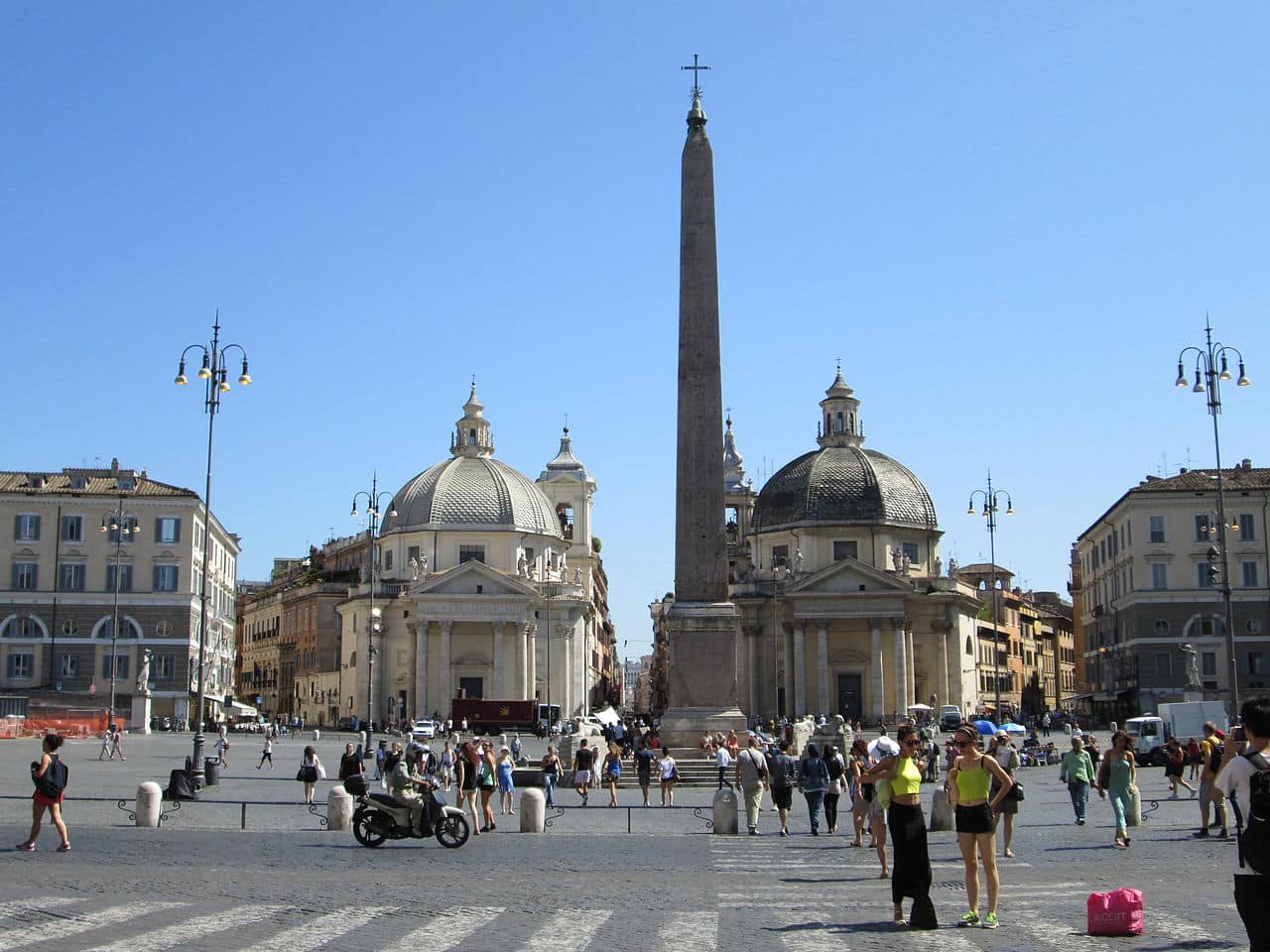
Piazza del Popolo, with the obelisk and the "twin" churches
We end our tour of the most important monuments in Rome by telling you about Piazza del Popolo. There are many other wonderful ones in the city like the Navona, which we have already mentioned in passing, or the Spain Squarealso very famous.
But we have chosen the Popolo because it has always been considered the door of rome. She received this name because from her came the VFlaminia, which connected the Latin city with the rest of Europe. It is a large circular surface in the center of which is a huge obelisk. In turn, in the four corners of this there are as many lions from whose mouths comes water that falls into a pond. These sources are due to Giuseppe Valadier who was inspired by the old Giacomo della Porta.
But the great symbol of the square is the Basilica of Santa Maria del Popolo, built in the XNUMXth century on the tomb of the Domizi, in which he was buried Nero. However, it was rebuilt in the XV following the Renaissance style. But its current appearance is due to Gian Lorenzo Bernini, who reformed it two centuries later giving it an unmistakable baroque look. But, if it is beautiful on the outside, it still has more jewels inside. It houses two paintings by Caravaggio, , sculptures by Bernini himself and a magnificent organ.
Also, in the square there are two other churches. They are the "twins" of Santa Maria in Montesanto and Holy Mary of the Miracle. They are also baroque and Bernini also participated in their construction. However, in these cases the creator was carlo rainaldi.
In conclusion, we have shown you some of the most important monuments of Rome. But there are so many that, inevitably, we have left many in the pipeline. For example, catacombs from the city, the Basilica of San Clemente or the Campidoglio square. Also, we have not discussed the wonders of Vatican because, strictly speaking, they do not belong to the Eternal City, but to another state. In any case, don't you think that Rome is full of beauty?